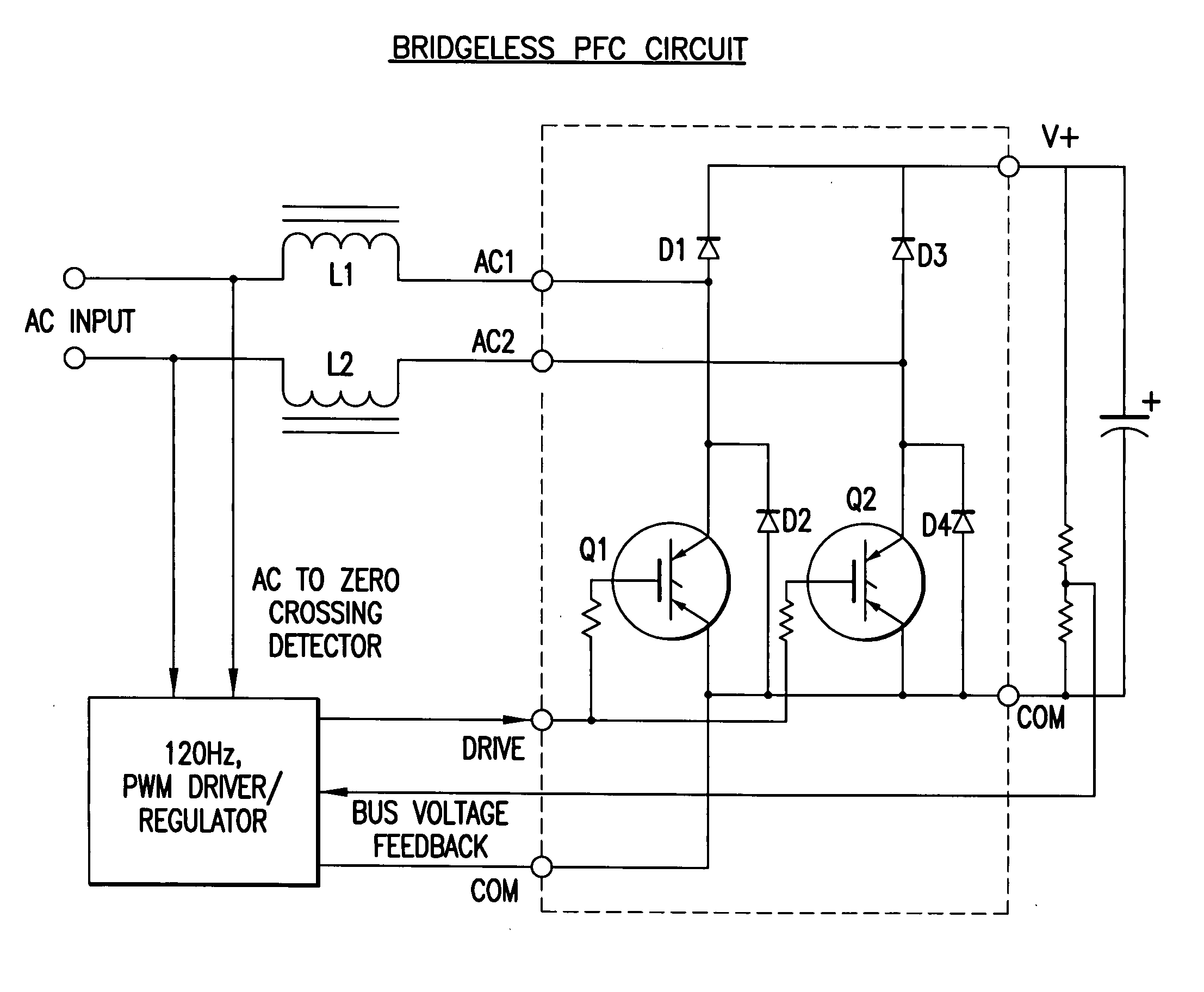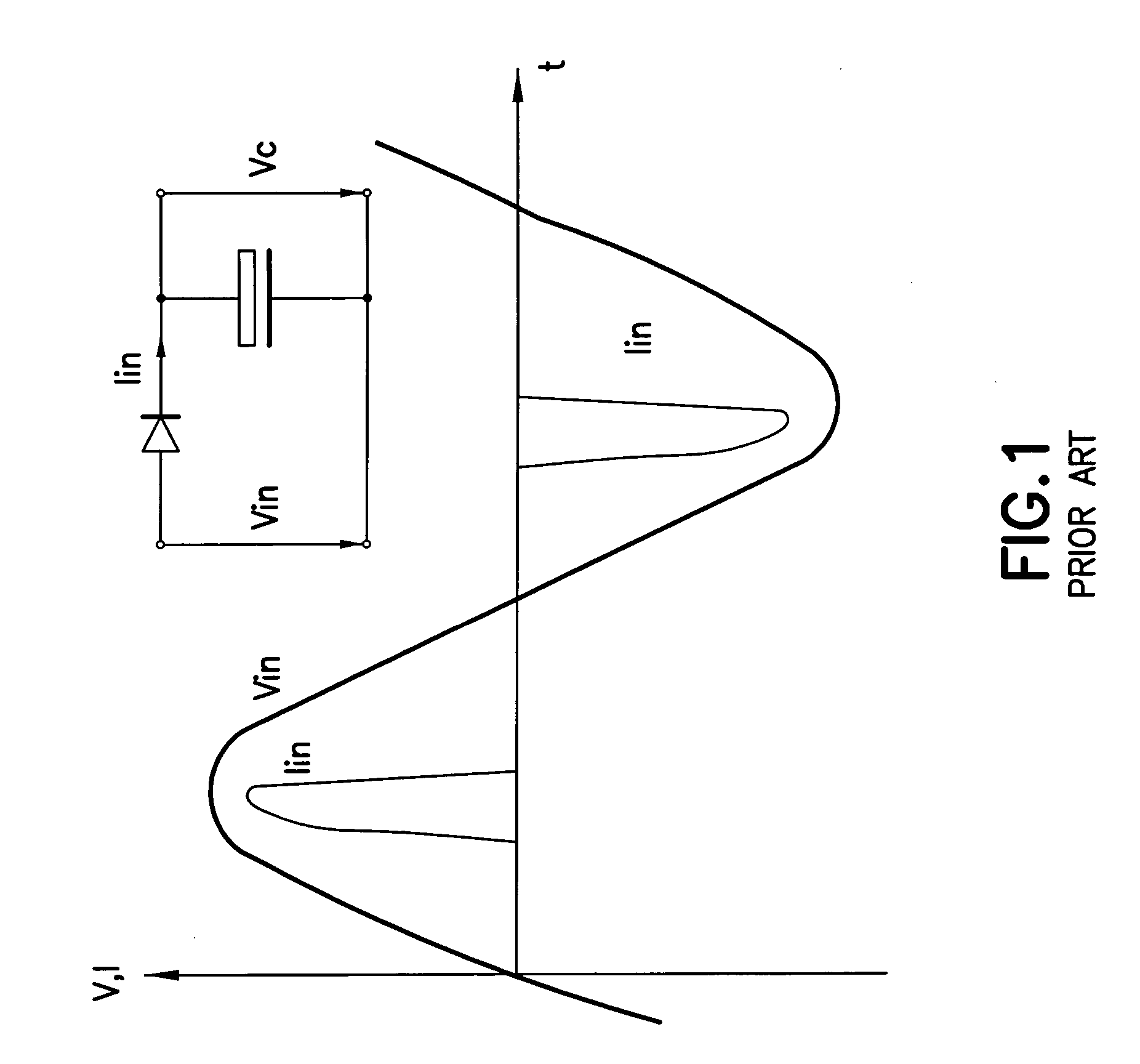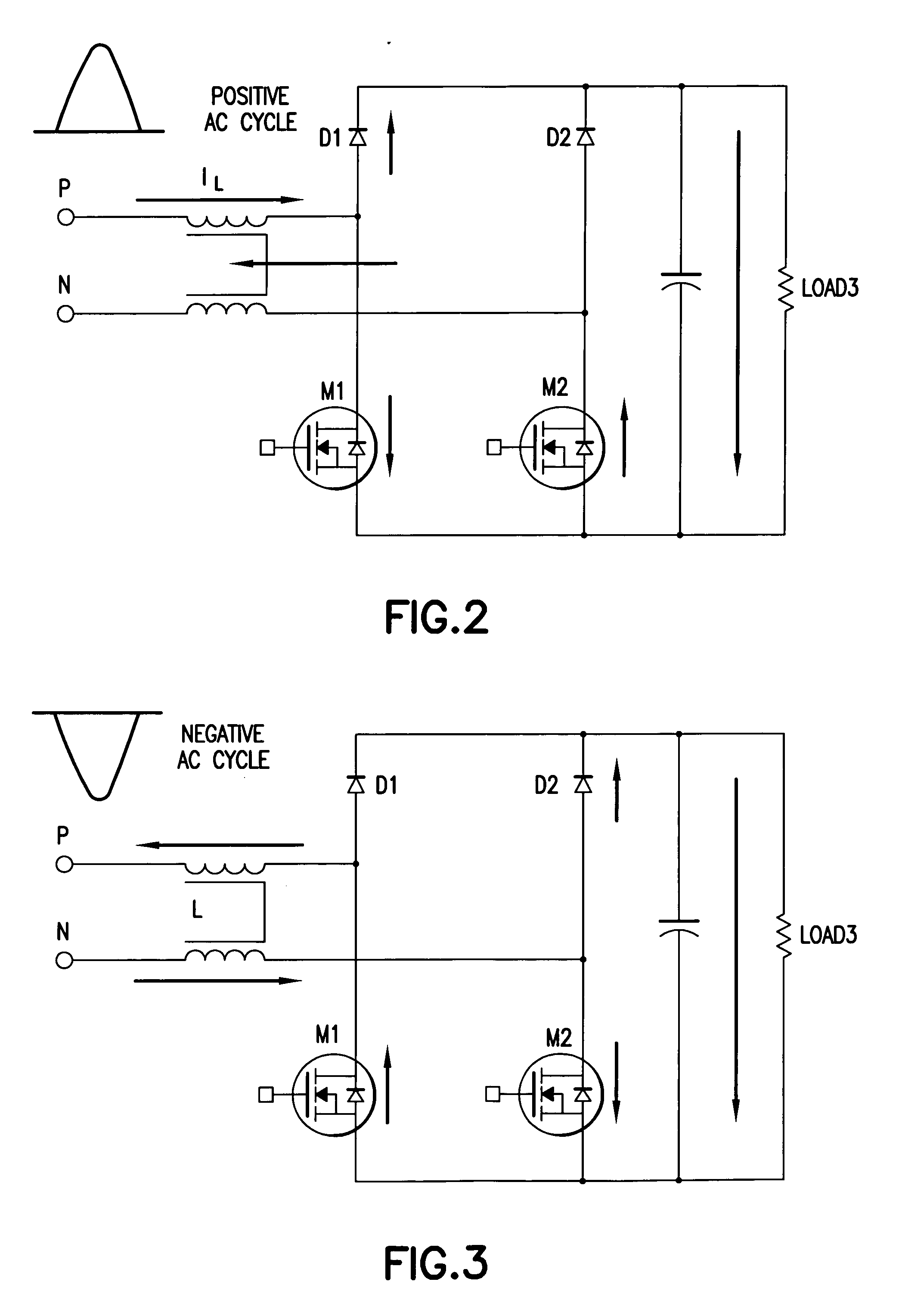Bridgeless boost converter with PFC circuit
a boost converter and circuit technology, applied in the direction of dc-dc conversion, conversion with intermediate conversion to dc, dc-dc conversion, etc., can solve the problems of increasing complexity of the input converter stage with power factor control, a great challenge for designers, and a great challenge in cost, reliability and ease of design, so as to achieve cost savings and efficiency gains
- Summary
- Abstract
- Description
- Claims
- Application Information
AI Technical Summary
Benefits of technology
Problems solved by technology
Method used
Image
Examples
Embodiment Construction
[0058] The circuit of FIG. 5 places the inductor(s) in the AC circuit, before the rectifier diodes D1-D4, so that D1 and D3 have the dual functions of rectification and boost diodes. It is apparent that the improved circuit has one less diode drop in the power flow. Since the circuit operates at 120 Hz, switching losses are virtually eliminated and D1-D4 and Q1-Q2 are standard speed components which have the added advantage of lower conduction losses than fast semiconductors. Q1 and Q2 may be IGBTs, for example.
[0059] The controller senses zero-voltage-crossing of the AC input signal and generates a PWM drive signal for the IGBT's Q1 and Q2.
[0060] The circuit delivers power factors of >0.99 without current sensing over typical line variations of + / − 10%. with efficiencies >98% in 230 VAC circuits delivering 1 KW at a DC bus voltage of 280 VDC.
[0061] The IGBT switches may be small (die size #2) since they conduct only on alternate half cycles even though they are driven simultaneo...
PUM
 Login to View More
Login to View More Abstract
Description
Claims
Application Information
 Login to View More
Login to View More - R&D
- Intellectual Property
- Life Sciences
- Materials
- Tech Scout
- Unparalleled Data Quality
- Higher Quality Content
- 60% Fewer Hallucinations
Browse by: Latest US Patents, China's latest patents, Technical Efficacy Thesaurus, Application Domain, Technology Topic, Popular Technical Reports.
© 2025 PatSnap. All rights reserved.Legal|Privacy policy|Modern Slavery Act Transparency Statement|Sitemap|About US| Contact US: help@patsnap.com



